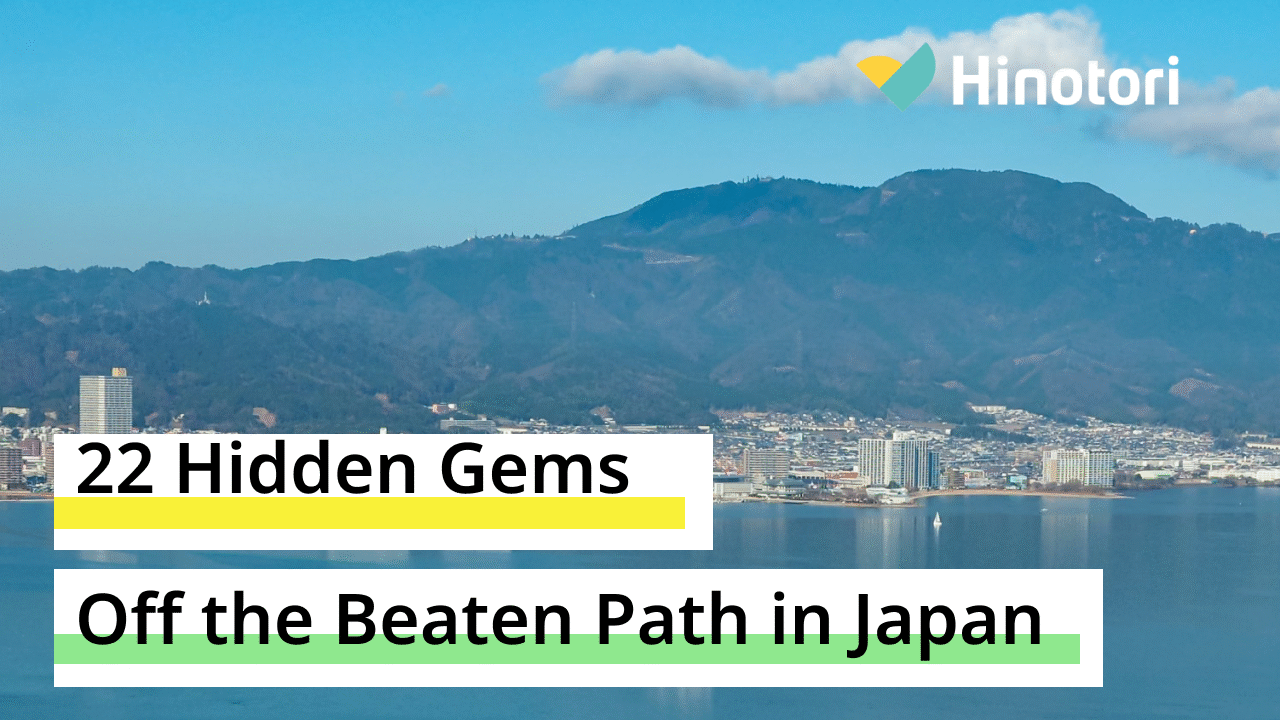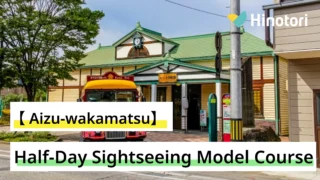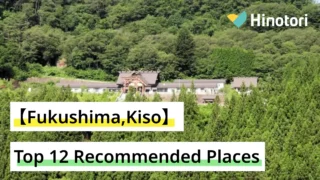Already visited Tokyo, Kyoto, and Osaka? Japan’s Golden Route is iconic—but the real charm lies beyond the crowds. This guide introduces 22 hidden gems across Japan, from quiet mountain villages to undiscovered beaches. Perfect for anyone who wanted to go beyond the tourist sports or for second-time visitors, this guide uncovers the hidden side of Japan. Let’s explore it together.
- From Golden Route to Secret Gems: Your Next-Level Japan Itinerary
- Hokkaido & Tohoku: Off the Beaten Path in Northern Japan
- Kantō: Off the Beaten Path Around Tokyo
- Chubu & Hokuriku: Off the Beaten Path in Central Japan
- Kansai: Off the Beaten Path in Japan’s Heartland
- Chugoku & Shikoku: Off the Beaten Path in Setouchi Region
- Kyushu: Off the Beaten Path in Southern Japan
- Okinawa: Off the Beaten Path in Remote Islands
- Practical Tips for Exploring Hidden Japan
- FAQ: Planning Your Hidden-Gem Adventure in Japan
- Explore Off the Beaten Path in Japan
From Golden Route to Secret Gems: Your Next-Level Japan Itinerary
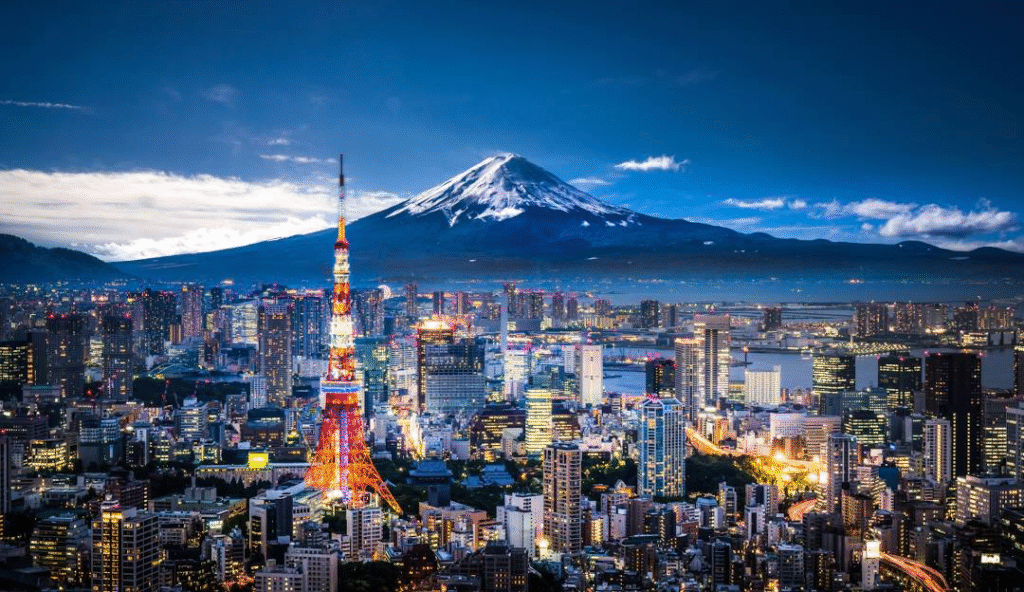
Source:https://www.google.com/search?client=safari&rls=en&q=nihonn&ie=UTF-8&oe=UTF-8
If you’re looking to see a side of Japan that few travelers experience, this guide is for you. Beyond the busy cities and iconic sights, the country is home to quiet corners where daily life moves at a slower pace and nature takes center stage.
We’ve gathered 22 unique destinations that offer something different—places where you can connect with local culture, enjoy wide-open landscapes, and find moments of true stillness.
Our journey begins in the north, with Hokkaido and the Tohoku region—areas known for their dramatic scenery, seasonal beauty, and deep-rooted traditions.Ready to explore? Let’s go!
Hokkaido & Tohoku: Off the Beaten Path in Northern Japan
Northern Japan—home to Hokkaido and the Tohoku region—is filled with hidden gems that many travelers overlook. From charming historical villages to relaxing hot springs and breathtaking natural landscapes, this part of the country offers peaceful spots where you can experience Japanese culture away from the crowds. Here are a few standout destinations to add to your list.
Ouchi-juku, Fukushima
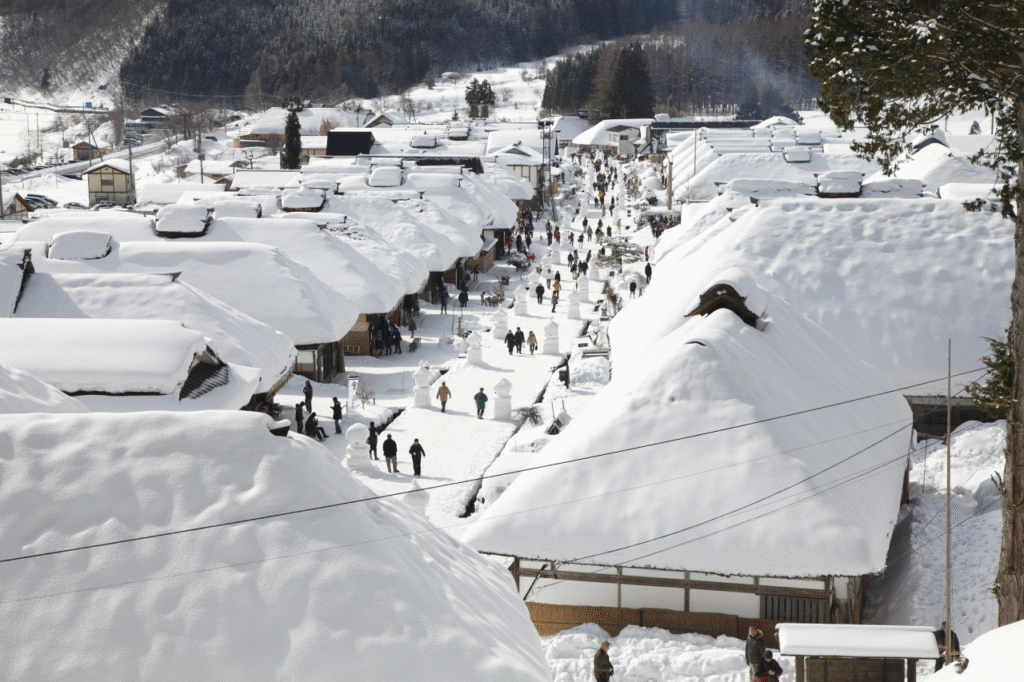
source: https://www.tohokukanko.jp/en/attractions/detail_1546.html
Nestled in the mountains of Fukushima Prefecture, Ouchi-juku is a remarkably well-preserved post town that offers a glimpse into Japan’s Edo-period past.The village retains its traditional charm with rows of Edo-period rooftops houses lining its main street. The atmosphere is quiet and timeless, inviting visitors to slow down and take in the surroundings.
In winter, the village transforms into a picturesque scene as snow blankets the rooftops, enhancing its fairytale-like appeal. A unique culinary highlight is negi soba—buckwheat noodles traditionally eaten using a long green onion instead of chopsticks. This regional specialty is both distinctive and memorable.
Ouchi-juku is surrounded by nature, making it a scenic destination year-round. Cherry blossoms in spring and vivid autumn foliage add seasonal color, while the peaceful setting offers a welcome contrast to Japan’s busier tourist spots. With its combination of historical architecture and natural beauty, Ouchi-juku provides a deeper, more authentic experience of rural Japan.
For those seeking to connect with the country’s past and enjoy its quieter landscapes, Ouchi-juku is a hidden gem well worth visiting.
Zao Onsen, Yamagata

source: https://www.japan-guide.com/e/e7928.html
Located in the mountains of Yamagata Prefecture, Zao Onsen is a destination where natural beauty and traditional hot spring culture come together in perfect harmony. During winter, it becomes a bustling ski resort, while in other seasons, visitors come for hiking, fresh mountain air, and the soothing atmosphere of its mineral-rich hot springs. The area is especially known for its milky-white, sulfuric waters—distinct in scent and revered for their therapeutic properties.
A standout experience is the Zao Dai-Rotenburo, a spacious open-air bath set against a stunning natural backdrop. Soaking here, offers a deeply relaxing connection to the landscape. In winter, the scenery becomes otherworldly as “snow monsters” (juhyō)—frost-covered trees shaped by icy winds—transform the mountains into a surreal, sculptural wonderland.
Zao also takes pride in its local cuisine, which features fresh mountain produce and seasonal specialties. The food reflects the region’s authentic charm and care for tradition. Combined with the area’s calm atmosphere and welcoming hospitality, Zao Onsen is an ideal retreat for travelers seeking both adventure and rest.
For those looking to step away from the crowds and experience a slower, more grounded side of Japan, Zao Onsen offers an unforgettable blend of scenic beauty, cultural depth, and relaxation.
Shiretoko Peninsula, Hokkaidō
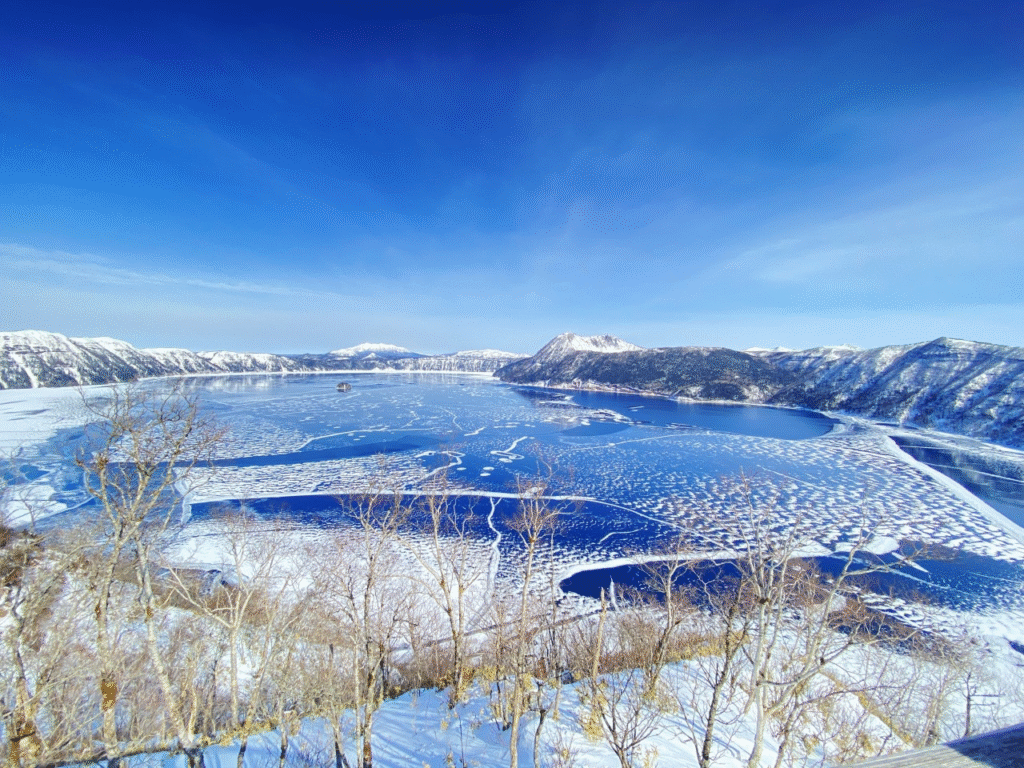
Source : https://visit-hokkaido.jp/en/adventure-travel/traveltrade-press/destinations/shiretoko-shari-utoro/
At the far eastern tip of Hokkaidō, the Shiretoko Peninsula is a beautiful and wild place that feels untouched by time. It is a UNESCO World Heritage Site known for its natural beauty and wildlife. The scenery changes with the seasons—from green mountains and clear seas in summer to quiet and snowy landscapes in winter.
A popular spot to visit is the Shiretoko Five Lakes. Surrounded by forests and tall mountains, the lakes have easy walking paths where you might see animals like deer, foxes, and sometimes bears. Bird lovers will enjoy this area too. You can also take boat tours to see whales and dolphins in the sea.
After a day of exploring, relax in one of Shiretoko’s natural hot springs. Shiretoko Onsen is famous for its ocean views, especially at sunset. Because this area is less crowded, it’s a great place to enjoy nature in peace.
Though not many international tourists visit yet, Shiretoko is perfect for those who want to experience Japan’s wild side. If you want to escape busy cities and enjoy quiet nature, the Shiretoko Peninsula is a wonderful hidden gem.
Miyajima Island, Miyagi

source: https://ikidane-nippon.com/en/spots/sakura-miyajima
Miyajima Island in Miyagi Prefecture is a quiet treasure where peaceful spirituality meets beautiful nature. Here, you’ll find a gentle version of the Itsukushima Shrine, famous for its torii gate that seems to float on the water at low tide—a truly magical sight to witness.
But Miyajima is much more than just the shrine. The island is surrounded by nature, making it a great spot for hiking, leisurely walks, or simply slowing down and enjoying the moment. In the heart of the island, traditional streets invite you to try handmade wagashi (Japanese sweets) and browse local crafts. Don’t miss momiji manju—a sweet cake shaped like a maple leaf, filled with red bean paste. It’s a perfect treat or souvenir to take home.
Friendly wild deer roam freely here, adding a gentle, peaceful feeling to the island’s atmosphere. Depending on the season, Miyajima transforms—cherry blossoms in spring, bright red maple leaves in autumn, and fresh sea breezes all year round.
Though it attracts visitors, Miyajima still holds many quiet corners where you can connect with nature and find calm. It’s a wonderful place to breathe, reflect, and experience a softer side of Japan. Next time you travel, consider stepping off the usual path and discovering the gentle beauty of Miyajima Island in Miyagi.
Kantō: Off the Beaten Path Around Tokyo
Just beyond the hustle and bustle of Tokyo lies the often-overlooked beauty of the wider Kantō region. Here, you’ll find peaceful spots that are perfect for a day trip—places where nature, history, and culture come together in a quieter, more relaxed setting. Whether you’re looking to escape the crowds, explore traditional towns, or unwind in nature, these hidden gems around Tokyo offer a refreshing change of pace from the typical tourist trail.
Ikaho Onsen, Gunma
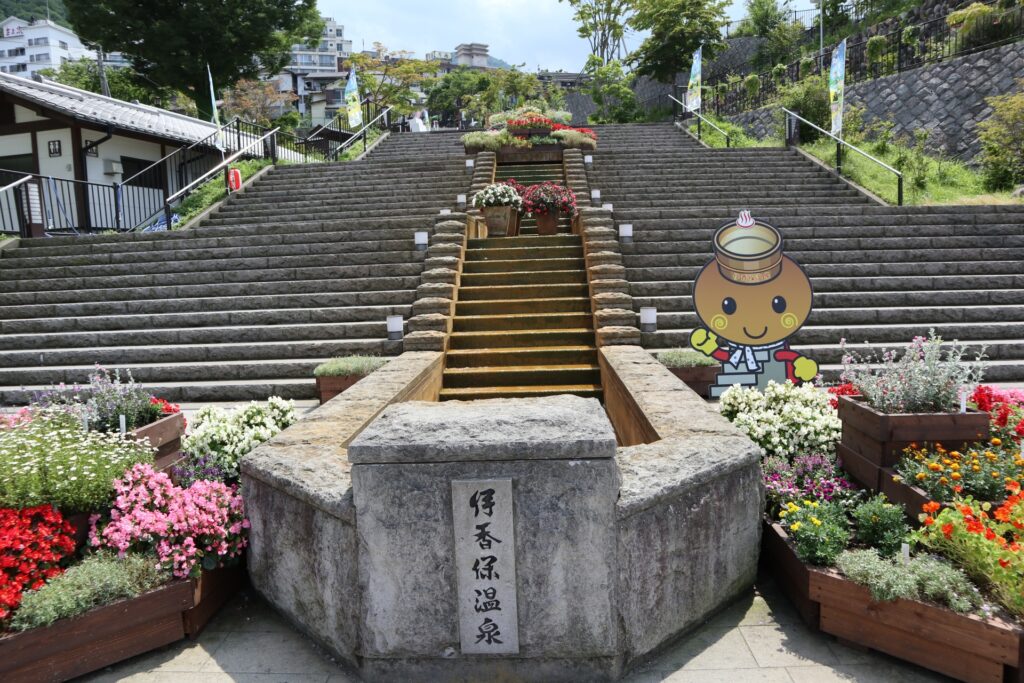
Nestled in the mountains of Gunma Prefecture, Ikaho Onsen is a peaceful hot spring town known for its relaxing atmosphere and deep cultural charm. With a history that dates back centuries, it has long been a favorite retreat for artists, writers, and travelers seeking a slower pace of life.
At the center of town is the iconic stone staircase, a 365-step path lined with traditional ryokan inns, souvenir shops, and cozy local restaurants. As you walk up the slope, you’ll enjoy beautiful views of the surrounding hills and feel the nostalgic charm of old Japan.
Ikaho’s onsen is famous for its iron-rich, reddish-brown water, believed to have healing and skin-soothing benefits. Many inns offer open-air baths with water flowing straight from the source—perfect for soaking while enjoying the seasonal scenery, especially during autumn when the leaves turn brilliant shades of red and gold.
The town also provides easy access to nearby attractions like Mount Haruna, its scenic lake, and historical sites such as Ikaho Shrine. After a day of sightseeing or a relaxing bath, enjoy a traditional Japanese meal featuring local specialties like Joshu beef and fresh mountain vegetables.
For travelers looking to escape the crowds and experience the quiet beauty of rural Japan, Ikaho Onsen offers a perfect mix of nature, culture, and hospitality. It’s an ideal spot to rest, recharge, and discover a more peaceful side of the country.
Okutama Mountains, Tokyo
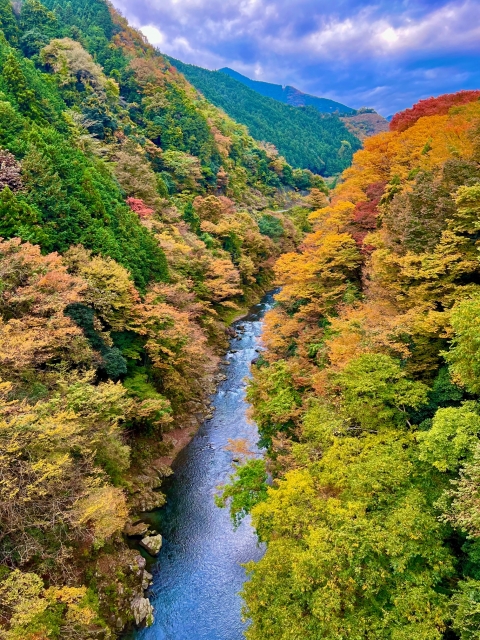
Just over an hour from the busy streets of central Tokyo, the Okutama Mountains offer a refreshing escape that feels like another world. Surrounded by forests, rivers, and quiet trails, this peaceful corner of western Tokyo is perfect for travelers who want to slow down, breathe in some fresh air, and enjoy the beauty of nature—without straying too far from the city.
What makes Okutama so special is how easy it is to reach, yet how calm and uncrowded it remains. Whether you’re an experienced hiker or just looking for a gentle walk, there’s a trail for you. Popular routes include the hike to Mount Mitake, with its mountaintop shrine and sweeping views, or a stroll along the Okutama Mukashi Michi, a former trade path lined with mossy stone markers, hidden waterfalls, and lovely viewpoints.
The changing seasons add even more charm—spring brings fresh greenery, while autumn transforms the mountains into a sea of red and gold. You’ll pass by cozy shrines, hear the sound of rushing water, and feel completely at peace as you walk.
After a day on the trails, there’s nothing better than a soak in a local onsen. Okutama Onsen has outdoor baths set among the trees, where you can relax your muscles and enjoy the sounds of the forest. It’s the perfect way to end the day—and a quiet reminder of how close nature really is, even from a big city like Tokyo.
If you’re looking for a quick getaway that blends adventure, calm, and natural beauty, the Okutama Mountains are a hidden gem worth discovering. Sometimes, trading skyscrapers for cedar trees is exactly what you need.
Hitachi Seaside Park, Ibaraki
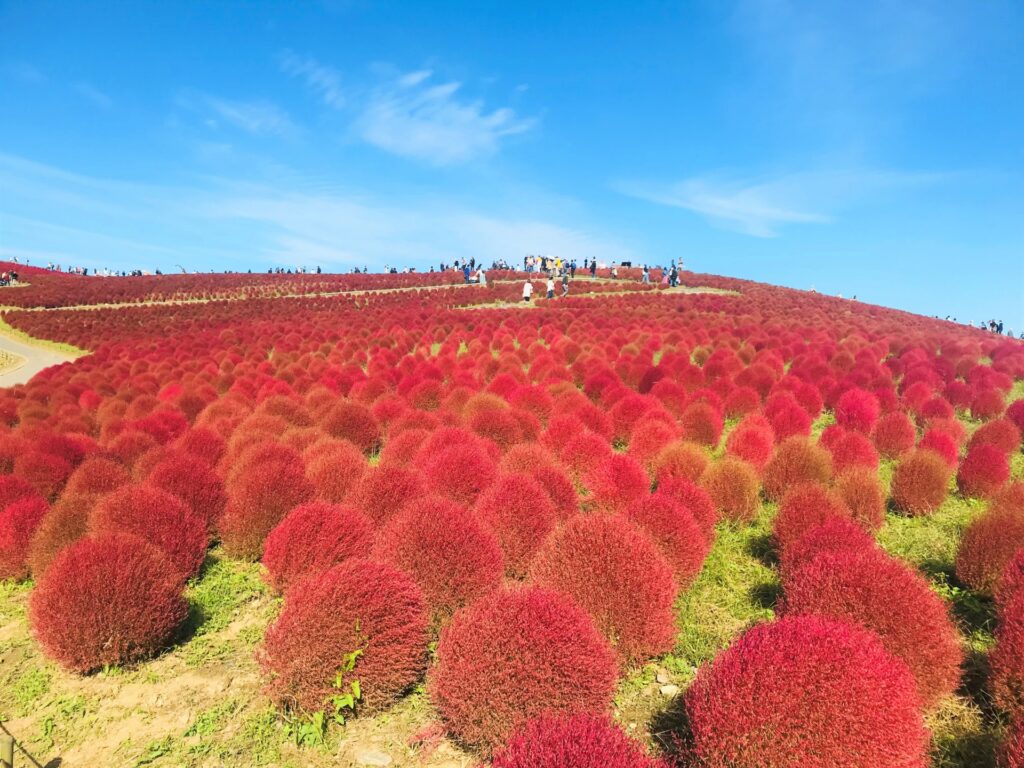
Located in Ibaraki Prefecture, Hitachi Seaside Park is one of those places that feels like it’s straight out of a dream. Spread across wide, open hills and fresh ocean air, this park is all about color, calm, and the changing beauty of the seasons. While it’s well-loved by locals, many international travelers still don’t know it exists—which only adds to its peaceful charm.
In spring, the park becomes something truly magical. Over 4.5 million baby blue nemophila flowers bloom across the hills, creating a soft, sky-colored sea that stretches as far as the eye can see. It’s one of those views that stops you in your tracks—and yes, it’s just as stunning in person as it looks on Instagram.
Come autumn, the landscape changes completely. The gentle hills turn crimson red as the kochia bushes light up the park with fiery color. Whether you’re walking, biking, or just sitting back on a bench, it’s the kind of place that invites you to slow down and soak it all in. Well-kept trails guide you through the gardens, and observation decks offer sweeping views of both the flowers and the nearby Pacific Ocean. If you catch the sunset here, you’re in for a golden, glowing memory.
Hitachi Seaside Park is a perfect day trip if you want to escape the crowds and reconnect with nature. It’s calm, colorful, and full of quiet wonder—ideal for anyone who appreciates the simple joy of beautiful scenery. If you’re looking for a spot that blends seasonal magic with wide-open space, this hidden gem definitely deserves a spot on your Japan travel list.
Chubu & Hokuriku: Off the Beaten Path in Central Japan
Central Japan’s Chubu and Hokuriku regions are home to some of the country’s most underrated gems—places where stunning nature and deep-rooted traditions blend beautifully. Away from the major tourist routes, these destinations offer a more authentic, peaceful experience. Here are a few hidden spots where you can enjoy the charm of Japan without the crowds.
Nagano City, Nagano

source : https://www.google.com/search?client=safari&rls=en&q=nagano+city&ie=UTF-8&oe=UTF-8
Located in the center of the Shinshu region, Nagano City is a peaceful place where nature, tradition, and local charm come together. Each season has something special to offer—snowy winters, cherry blossoms in spring, fresh green landscapes in summer, and colorful leaves in autumn.
At the heart of the city is Zenkoji Temple, one of Japan’s oldest and most important temples. It’s a calm and beautiful spot to walk around and learn about Japan’s history and Buddhist traditions.
Not far from the city is the famous Jigokudani Monkey Park, where wild snow monkeys relax in hot springs. Watching them soak and play in the warm water is a fun and unforgettable experience.
Nagano is also known for its delicious food. Be sure to try Shinshu soba, a tasty noodle made from local buckwheat. Small, family-run restaurants and local markets offer fresh dishes made with seasonal ingredients.
For outdoor lovers, Nagano is a great starting point for hiking in the Japanese Alps. There are trails for all levels, from easy walks to mountain hikes with amazing views.
Even though it’s not as famous as some big cities, Nagano City is a wonderful place to relax, enjoy nature, and experience real Japanese culture. It’s a hidden gem that offers something for everyone.
Higashiyama Trail, Gifu

source : https://www.japan-guide.com/e/e5906.html
Tucked away in the scenic heart of Gifu Prefecture, the Higashiyama Trail is a peaceful hiking route that combines nature, history, and local charm. Once used by samurai and pilgrims, this quiet path takes you through forests, old temples, and traditional neighborhoods. With cherry blossoms in spring and colorful leaves in autumn, the trail offers something special in every season.
The walk starts near Gifu City and leads into the nearby hills, where you’ll pass by centuries-old shrines and scenic viewpoints. As you follow the path, it’s easy to feel connected to Japan’s rich past. Plus, it’s not far from famous spots like Shirakawa-go and Takayama, so it’s easy to add to your travel plans.
Whether you’re just out for a gentle walk or looking for a longer hike, there are routes for all levels. Along the way, enjoy local dishes made with fresh ingredients—simple, tasty meals that feel even better after some time outdoors. And don’t be surprised if locals greet you with a smile; the friendly atmosphere here is part of what makes the trail so special.
The Higashiyama Trail isn’t just a hike—it’s a chance to slow down, enjoy nature, and experience the quieter side of Japan. If you’re looking to step off the beaten path, this hidden gem is well worth exploring.
Noto Kongo Coast, Ishikawa

source : https://www.japan-guide.com/e/e4253.html
Tucked away at the northern tip of the Noto Peninsula, the Noto Kongo Coast is one of Japan’s best-kept secrets. This quiet coastal stretch is known for its dramatic cliffs and uniquely shaped rocks, shaped over time by strong winds and waves. Watching the white surf crash against the dark stone creates a powerful, almost meditative scene—perfect for travelers who want to slow down and reconnect with nature.
The area isn’t just beautiful—it’s also full of local flavor. Small seaside eateries offer fresh seafood straight from the morning’s catch. From delicate sashimi to seasonal fish dishes, the food here is simple, honest, and deeply satisfying. It’s a great chance to taste the true flavors of coastal Japan in a warm, welcoming setting.
For those who love the outdoors, walking trails along the cliffs offer peaceful hikes with panoramic ocean views. You might spot seabirds, native plants, or just enjoy the salty breeze and wide-open skies. As the day ends, the sunset over the sea paints everything in soft gold and pink—an unforgettable sight that makes the journey worth it.
Far from the usual tourist routes, the Noto Kongo Coast is a place to rest, explore, and breathe deeply. If you’re looking for a slower, more meaningful travel experience, this hidden corner of Ishikawa Prefecture is ready to welcome you with open skies and quiet charm.
Sado Island, Niigata
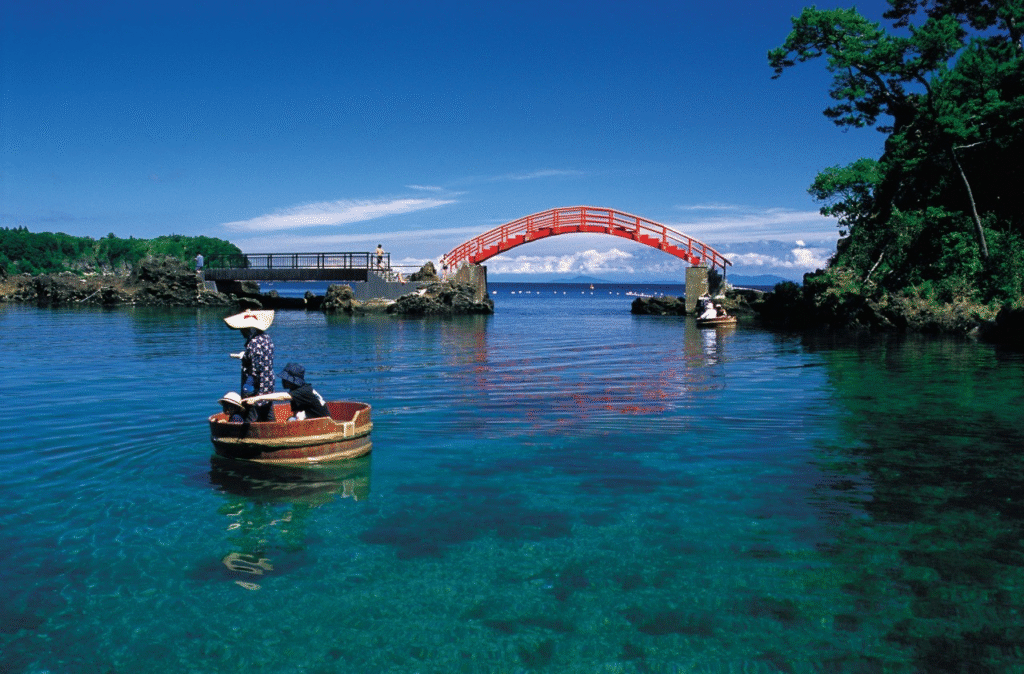
source : https://www.tohokukanko.jp/en/attractions/detail_1314.html
Just off the coast of Niigata Prefecture, Sado Island is one of Japan’s best-kept secrets. Far from the tourist crowds, this peaceful island is known for its scenic beauty, historic gold mines, and deep cultural roots. It’s a perfect place to slow down, relax, and experience a different side of Japan.
The island’s nature is stunning all year round—rolling hills, quiet beaches, and wide coastal views. In autumn, the trees burst into color, making it a great time to hike or bike through the countryside. The clear blue waters along the northern coast are also perfect for snorkeling and exploring the sea.
Sado is also rich in culture. Locals proudly preserve traditional music and dance, like the famous Sado Okesa folk song. If you visit during a local festival, you’ll feel the warm community spirit and get a real taste of island life.
Don’t leave without trying the food! Sado is known for its rice, seafood, and fresh local dishes. Whether it’s a simple seafood bowl or a full traditional meal, the flavors here are fresh and unforgettable. If you’re looking for an off-the-beaten-path destination with heart, nature, and great food—Sado Island is waiting for you.
Kansai: Off the Beaten Path in Japan’s Heartland
The Kansai region offers more than just famous cities. For a quiet, spiritual journey, explore ancient forested trails once walked by pilgrims. In a serene mountain town, soak in mineral-rich waters while surrounded by nature and traditional inns. Near a scenic lake, visit a well-preserved historic castle with elegant gardens and peaceful shoreline paths perfect for a slow stroll. These places reveal Kansai’s beauty without the crowds, offering deep cultural and natural immersion.
Kumano Kodo Iseji, Wakayama/Mie
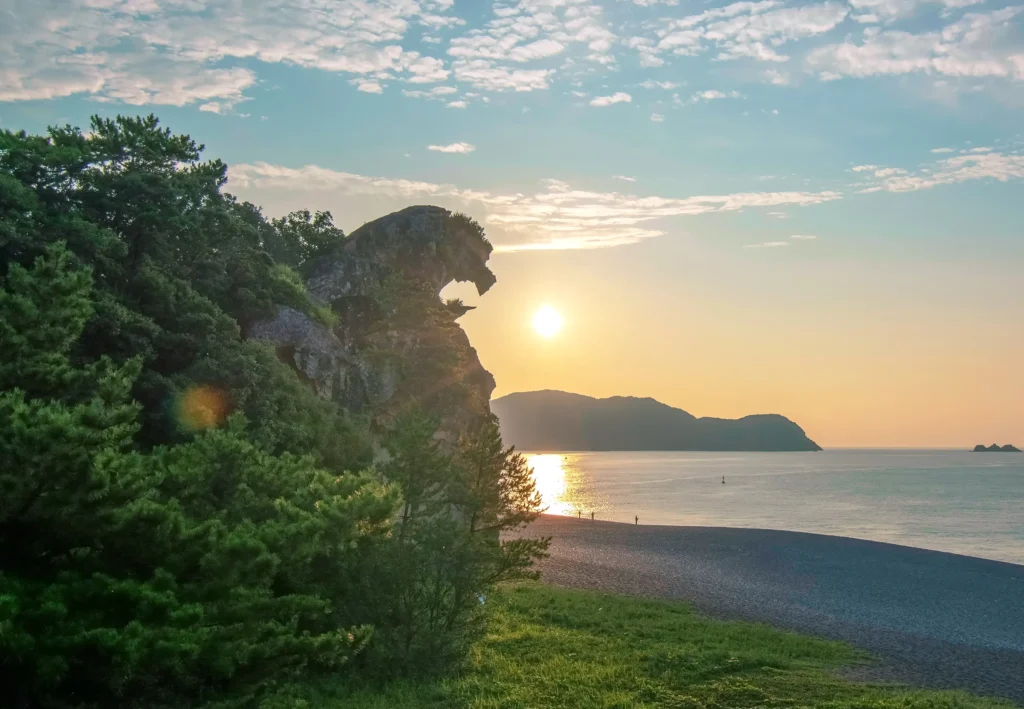
Source : https://visitmie-japan.travel/en/discover-mie/kumano-kodo-iseji/
The Kumano Kodo Iseji is a historic pilgrimage trail stretching across Wakayama and Mie prefectures, where natural beauty and cultural heritage come together in perfect harmony. This ancient path has been traveled for centuries, connecting pilgrims to the sacred Kumano Sanzan shrines. The route from Ise Jingu Shrine to Kumano Taisha offers a peaceful journey through quiet mountain trails and stunning coastal views, providing a deep sense of calm and reflection.
Along the way, you’ll encounter old shrines and historic buildings, where locals warmly welcome visitors, making your experience all the more special. The changing seasons bring their own charm, with breathtaking cherry blossoms in spring and vibrant autumn foliage painting the landscape. As you hike through tranquil forests, you can listen to birdsong and the gentle rustle of the wind — moments that embody the trail’s serene spirit.
Far from the busy typical tourist spots, Kumano Kodo Iseji is an ideal destination for travelers seeking peace of mind and a meaningful connection with Japan’s cultural roots. Walking this path offers a unique chance to experience Japan’s history and nature in a truly unforgettable way. Be sure to add this hidden gem to your itinerary on your next visit.
Gero Onsen, Hyōgo

source : https://www.gero-spa.or.jp/lg_en/
Gero Onsen is one of Japan’s most famous hot spring towns — and for good reason. Tucked into the mountains, this peaceful spot is known for its gentle, skin-softening waters and relaxed vibe. It’s a great place to unwind, surrounded by nature and local charm.
The hot springs here are clear, slightly alkaline, and known for making your skin feel smooth and refreshed. Many ryokans and hotels have outdoor baths with beautiful views of the mountains, perfect for soaking while watching the seasons change — from colorful autumn leaves to quiet winter snow.
There’s more to do than just bathe. You can stroll through the small town, try local snacks, pick up souvenirs, or take a short trip to nearby waterfalls and hiking trails. Don’t miss the Hida Great Limestone Cave, where you can explore cool underground rock formations.
Whether you’re looking to relax, explore nature, or simply escape the crowds, Gero Onsen is a perfect getaway that leaves you feeling refreshed — both body and mind.
Hikone Castle & Lake Biwa, Shiga
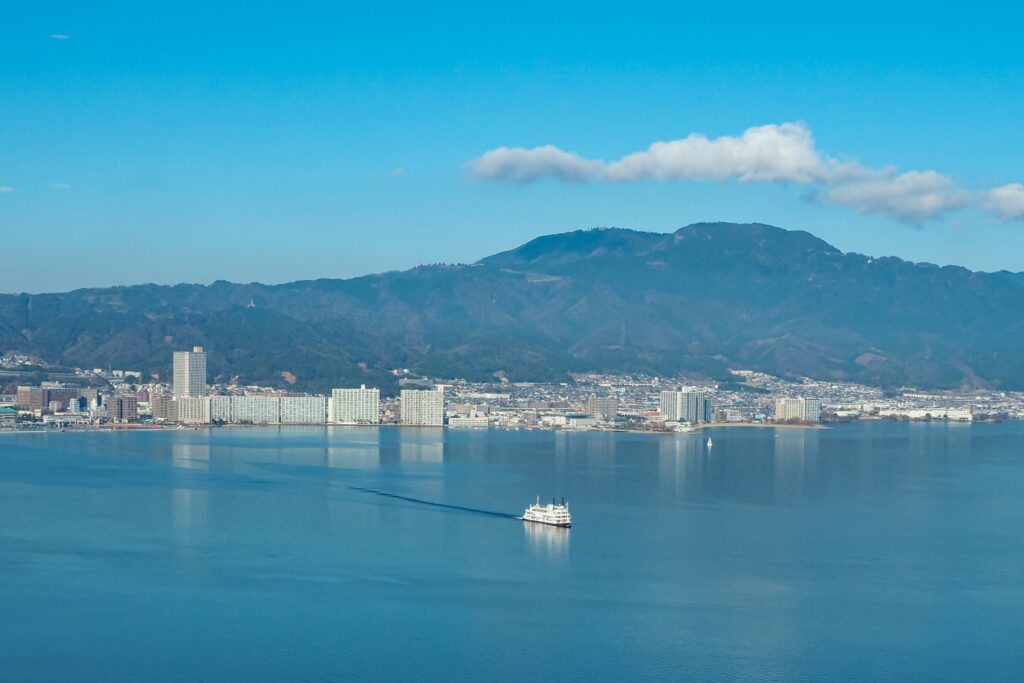
Tucked away in Shiga Prefecture, Hikone Castle is one of Japan’s most beautiful and best-preserved castles. Its elegant, white-walled main keep dates back to the Edo period and still stands in its original form—a rarity in Japan. Walking through its historic grounds feels like stepping into another era, especially in spring when the cherry blossoms bloom and the whole area is transformed into a sea of soft pink.
Just a short stroll away is Lake Biwa, Japan’s largest lake, and a perfect complement to the castle’s historic charm. The lake offers wide open views, fresh air, and a peaceful vibe that invites you to slow down. Whether you’re boating on calm waters or riding a bike along the well-kept paths, it’s a wonderful way to enjoy the natural side of the region. The northern shore is especially rich in nature and is perfect for a quiet hike or a picnic by the water.
One of the best things about visiting Hikone is how uncrowded it feels. Unlike the more popular tourist spots, this area moves at a gentle pace. You’ll have time to explore without rushing, chat with locals, and soak in the scenery. It’s the kind of place where you can really enjoy both cultural depth and simple moments of calm.
For travelers looking for something more peaceful and authentic, Hikone Castle and Lake Biwa offer a refreshing alternative. It’s a destination that blends history and nature effortlessly—and leaves you with that rare feeling of having truly discovered a quieter, more personal side of Japan.
Chugoku & Shikoku: Off the Beaten Path in Setouchi Region
The beautiful Setouchi region of Japan is home to many hidden gems that remain off the typical tourist path. Here, nature’s stunning landscapes blend seamlessly with rich historical charm, offering visitors unique and authentic experiences. From tranquil coastal areas to culturally significant sites, this region invites travelers to explore its quieter, yet deeply captivating spots.
Tottori Sand Dunes & Hakuto, Tottori
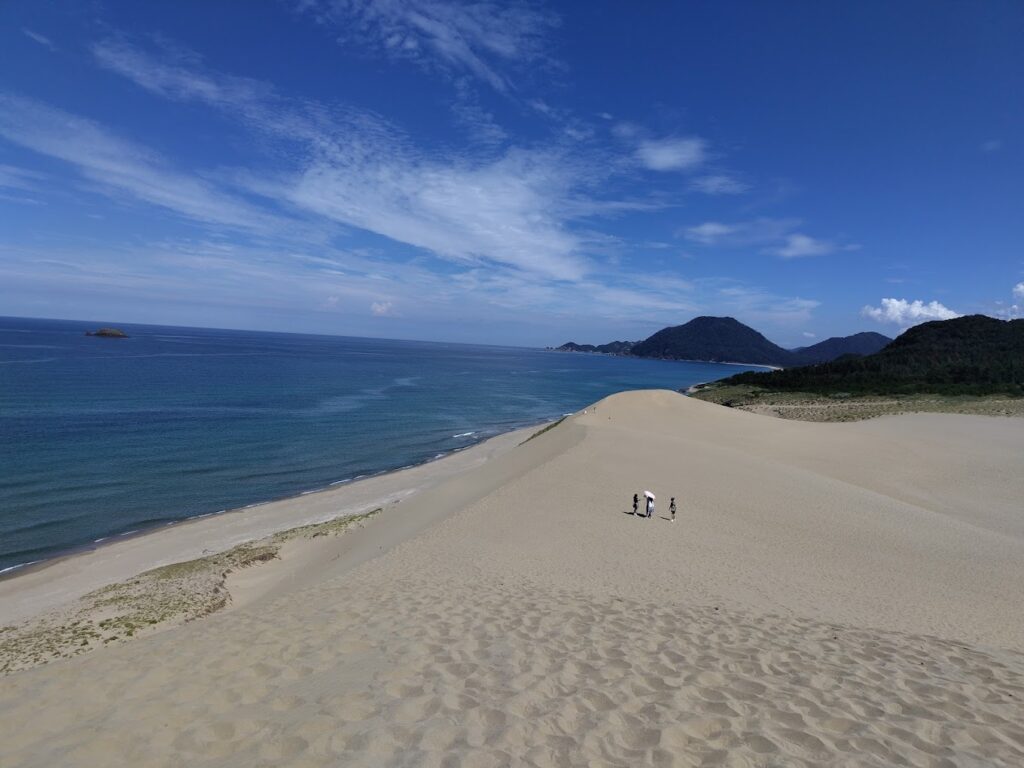
Located in Tottori Prefecture, the Tottori Sand Dunes are Japan’s only large-scale dunes, and they feel like something from another planet. Stretching along the Sea of Japan, the shifting waves of sand create a surreal, ever-changing landscape. At sunset, when the golden light hits the ridges and the sky turns orange, the scene becomes truly magical—a dream for photographers and nature lovers alike.
There’s more than just sightseeing here—you can ride camels across the sand, try sandboarding down the slopes, or even take a walk barefoot to feel the warm grains between your toes. Nearby, the Sand Museum showcases amazing sculptures made entirely of sand and offers interesting insights into how these dunes formed and how they support local wildlife.
Just a short trip away is the Hakuto Coast, known for its myths and peaceful ocean views. The nearby Hakuto Shrine is tied to the legend of the White Rabbit of Inaba, one of Japan’s oldest love stories. A walk along the coast here, with the sound of waves and salty sea air, adds a quiet, spiritual touch to your journey.
Tottori may not be on every traveler’s radar, but that’s part of its charm. Alongside its dramatic landscapes, the region is known for fresh seafood and local treats like pear desserts. Whether you’re drawn by nature, folklore, or food, a visit to the Tottori Sand Dunes and Hakuto Coast offers a refreshing look at a quieter, captivating corner of Japan.
Izumo Taisha Beaches, Shimane
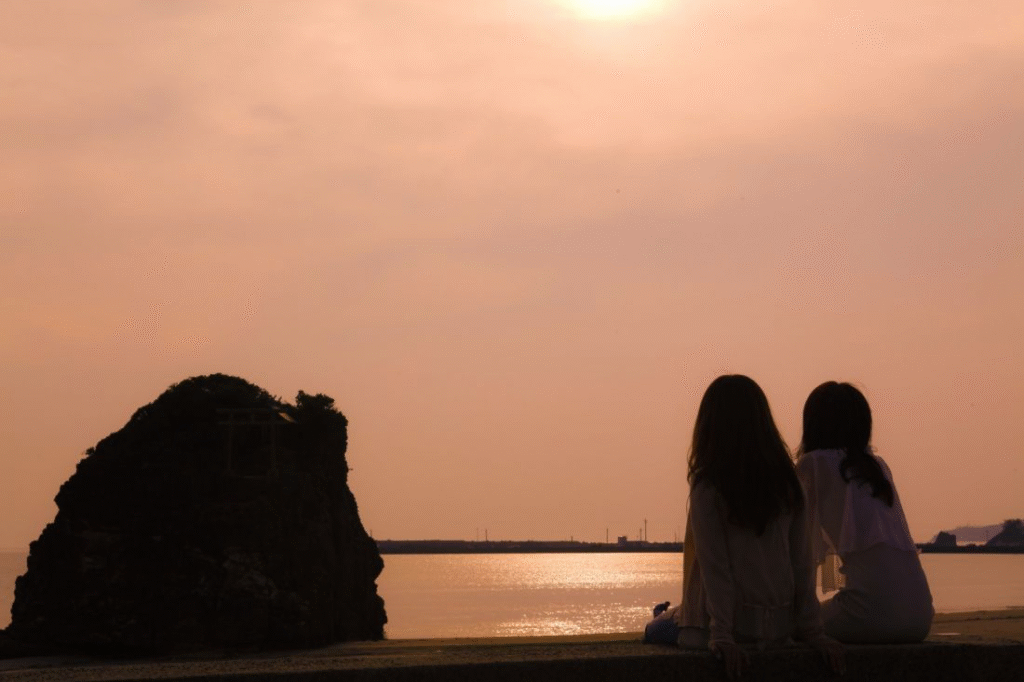
source: https://www.kankou-shimane.com/en/destinations/9309
Izumo Taisha in Shimane Prefecture is a special place full of history and Japanese myths. The shrine has a calm, spiritual feeling that draws many visitors. But not far from this famous spot, you’ll find quiet, beautiful beaches that are like hidden treasures.
Just a short drive from the shrine is Izumo Taisha Beach, where soft white sand and gentle waves make for a peaceful place to relax. It’s great for swimming, having a picnic, or just enjoying the quiet with friendly locals. At sunset, the beach becomes especially magical, with colors that stay in your memory.
A bit farther away, near Matsue Vogel Park, there’s another lovely beach worth visiting. You can take peaceful walks and enjoy nature all around. In spring, cherry blossoms bloom nearby, creating a stunning view where pink flowers meet the blue sea—a truly unforgettable sight.
Together, Izumo Taisha and these nearby beaches offer a beautiful mix of history, nature, and peace. If you want to escape busy tourist spots and find calm, this area is a perfect getaway to enjoy Japan’s gentle side.
Shodoshima Island-hop, Kagawa
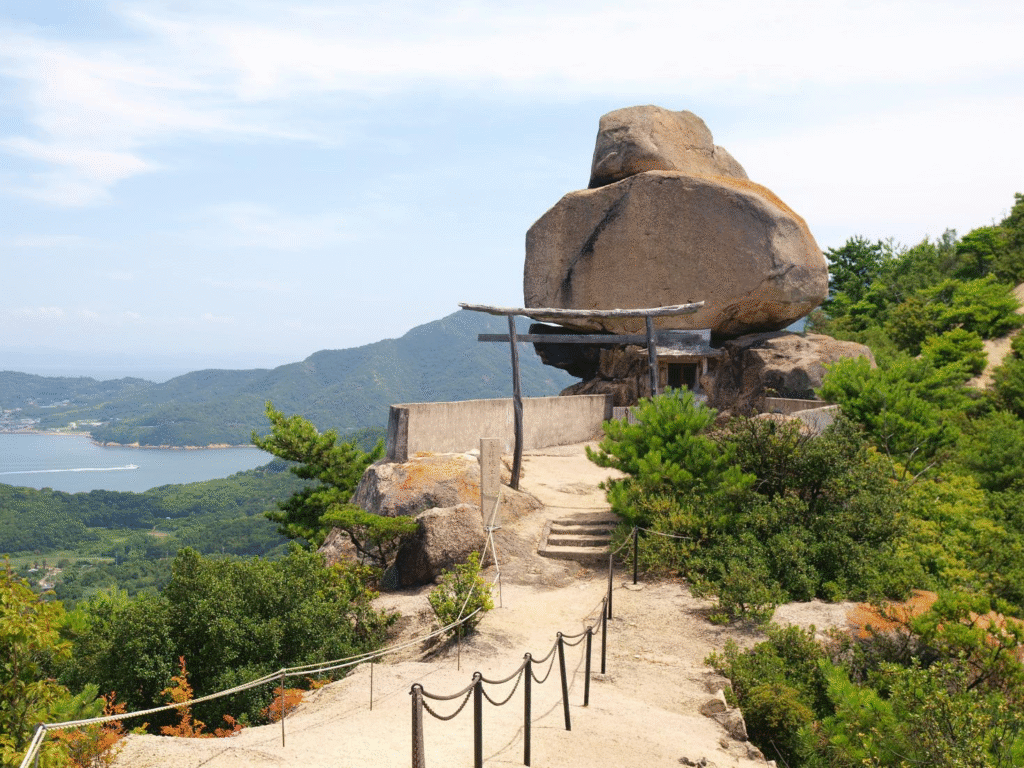
source : https://www.my-kagawa.jp/en/see-and-do/10120
Located in Kagawa Prefecture, Shodoshima is a beautiful hidden gem surrounded by the calm waters of the Seto Inland Sea. The island is famous for its olive trees and delicious olive oil. When you visit, be sure to stop by Olive Park, where you can walk among the olive groves and enjoy lovely views. Don’t miss trying the tasty olive-based dishes and sweets made right on the island.
But Shodoshima is more than just olives. It’s full of charming old towns and peaceful temples to explore. One of the best spots is Kankakei Gorge, known for its amazing views, especially in autumn when the leaves change color. Taking the ropeway up to the top gives you a breathtaking panorama and a chance to relax and take it all in.
Shodoshima is also a great base for visiting nearby islands. From here, you can get on ferries to places like Teshima and Naoshima. These islands are famous for blending nature and art, with Naoshima being a must-see for art lovers. You can visit unique museums like the Chichu Art Museum and Benesse House for a special cultural experience.
Island hopping around Shodoshima is a peaceful way to enjoy nature and culture at your own pace. It’s a perfect spot for travelers who want to escape the busy tourist crowds and discover a quieter, more genuine side of Japan.
Kyushu: Off the Beaten Path in Southern Japan
Kyushu, located at the southern tip of Japan, is a region rich in nature and unique culture. While Fukuoka and Nagasaki are well-known tourist destinations, there are many hidden gems that receive fewer visitors. Here, we introduce some spots where you can fully experience the charm of Kyushu away from the crowds.
Takachiho Gorge, Miyazaki

Tucked away in Miyazaki Prefecture, Takachiho Gorge is one of those rare places where nature and legend come together beautifully. With its tall cliffs, crystal-clear river, and peaceful atmosphere, it feels like stepping into a storybook. In autumn, the colorful leaves make the whole area glow, but it’s a stunning place to visit any time of year.
One of the highlights is Manai Falls, a graceful waterfall that drops from about 17 meters into the gorge. You can admire it from the walking paths—or better yet, rent a little rowboat and glide right past it. Drifting through the calm waters surrounded by towering rock walls is a magical, calming experience.
Takachiho is also steeped in mythology. According to legend, this is where the sun goddess Amaterasu once hid in a cave, casting the world into darkness. Visiting sites like Amano-Iwato Shrine and learning the stories behind them brings the area’s spiritual side to life.
Whether you’re drawn by the natural beauty, the cultural richness, or simply want a quiet break from the city, Takachiho Gorge is a place that stays with you. It’s a hidden gem that invites you to slow down, take in the view, and feel the deep history in the air.
Beppu & Yufuin, Oita
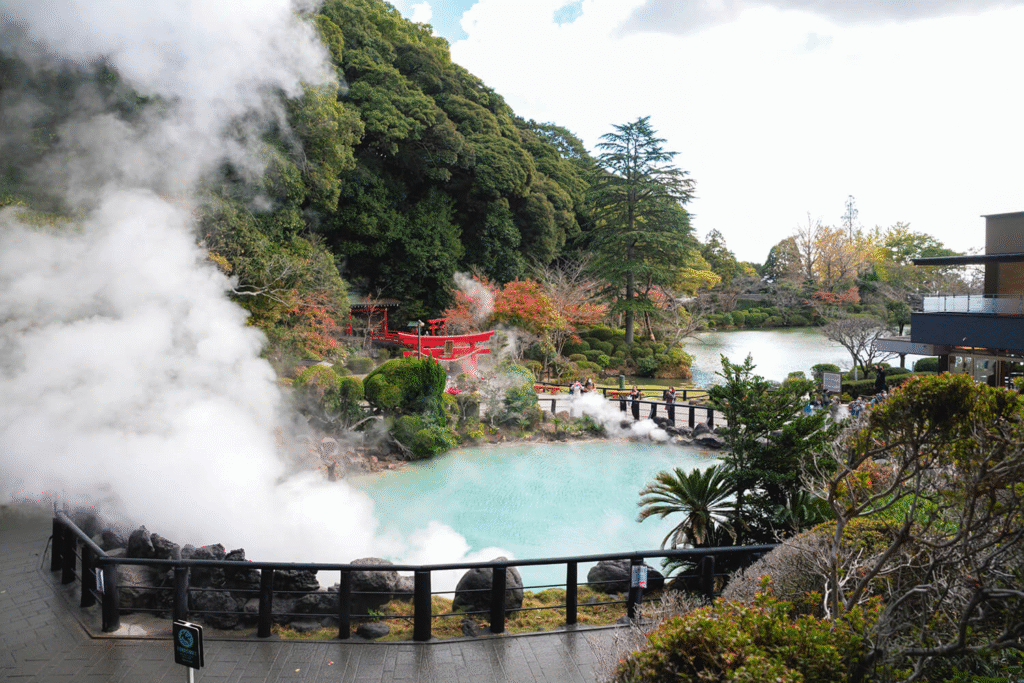
Source : https://hoshinoresorts.com/en/guide/area/kyushu/oita/beppu/beppu-childkanko/
Beppu and Yufuin, two charming towns in Oita Prefecture, are more than just famous hot spring spots—they’re places where nature, culture, and relaxation come together beautifully. In Beppu, you’ll find a huge variety of hot springs, including the unique “Jigoku Meguri” or “Hell Tour,” where steaming, colorful geothermal pools make you feel like you’ve stepped into another world.
Yufuin offers a quieter, more scenic vibe. With Mount Yufu in the background, it’s especially breathtaking during cherry blossom season or when the autumn leaves are in full color. The town is also known for its artsy feel, with plenty of small galleries, local craft shops, and cozy cafés that invite you to slow down and enjoy the atmosphere.
Food lovers will find plenty to enjoy in both towns. Beppu is great for fresh seafood, while Yufuin is known for simple but delicious dishes made from locally grown vegetables and meats. Whether you’re dining at a fancy restaurant or a tiny family-run eatery, the flavors are fresh and full of care.
Even though both towns are popular with visitors, it’s easy to find peaceful corners where you can soak in a quiet onsen, take a walk surrounded by nature, and just unwind. If you’re looking for a relaxing getaway with a blend of hot springs, good food, and lovely views, Beppu and Yufuin are the perfect escape.
Sakurajima Ferry Adventure, Kagoshima
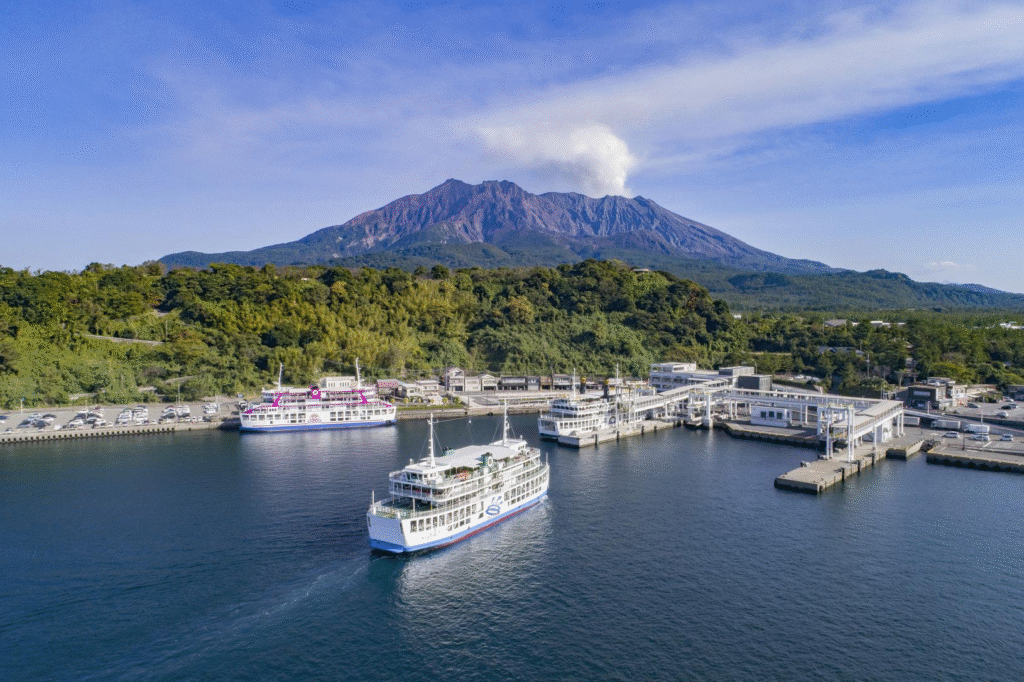
Source : https://www.kagoshima-yokanavi.jp/en/transportation/10413
Just a short ferry ride from Kagoshima City, Sakurajima is one of Japan’s most famous volcanoes—and it’s still active! Even so, the island feels calm and welcoming, with beautiful views and plenty to explore.
The ferry takes only 15 minutes, and the ride itself is part of the fun. As you get closer, the volcano looks huge and powerful—especially at sunset, when the sky turns orange and pink.
Once you arrive, a good first stop is the Sakurajima Visitor Center. You can learn about the volcano’s history, see how it shaped the island, and pick up maps and tips for your visit. The viewing deck there is also great for photos of both the volcano and Kagoshima City across the bay.
Sakurajima isn’t just about nature—it’s also a relaxing place. You can enjoy hot springs warmed by the volcano, and try tasty local food like Sakurajima daikon (giant radish) and black pork. Meals here are simple, fresh, and delicious.
If you like being outside, there are easy walking trails and quiet spots to explore. The island loop road is perfect for a drive or bike ride, with pretty beaches and viewpoints along the way.
Whether you’re looking for a short nature escape or a peaceful break from the city, Sakurajima is a hidden gem that’s easy to reach and full of quiet beauty.
Okinawa: Off the Beaten Path in Remote Islands
Okinawa is famous for its beautiful beaches and rich culture, but beyond the popular tourist spots lie hidden gems that offer unique experiences. The remote islands of Okinawa provide opportunities to enjoy stunning natural beauty and distinctive local traditions. Here, we introduce several lesser-known islands in Okinawa that are well worth a visit for those seeking something off the beaten path.
Kerama Islands, Okinawa

Source : https://www.oki-islandguide.com/areaguide/kerama-islands-2
Located about 40 kilometers from Okinawa’s main island, the Kerama Islands are a hidden paradise known for their crystal-clear waters and beautiful beaches. These islands are ideal for diving and underwater exploration boasting vibrant coral reefs and abundant marine life. Especially on Zamami and Aka Islands, the peaceful environment with fewer tourists allows visitors to fully enjoy nature and unwind in tranquility.
The appeal of the Kerama Islands goes beyond their beaches. Visitors can also experience local culture and traditions, such as tasting traditional island cuisine and participating in local festivals, providing a deeper connection to Okinawan heritage. Hiking trails on the islands offer opportunities to explore untouched nature and stunning landscapes, perfect for refreshing both body and mind.
Though lesser known as a tourist destination, the Kerama Islands offer unique and memorable experiences. Whether you want to relax on quiet beaches or engage in active marine adventures, these islands are a perfect getaway to enjoy Okinawa’s natural beauty and cultural richness. Consider the Kerama Islands as your next travel destination.
Amami Oshima Mangroves, Kagoshima
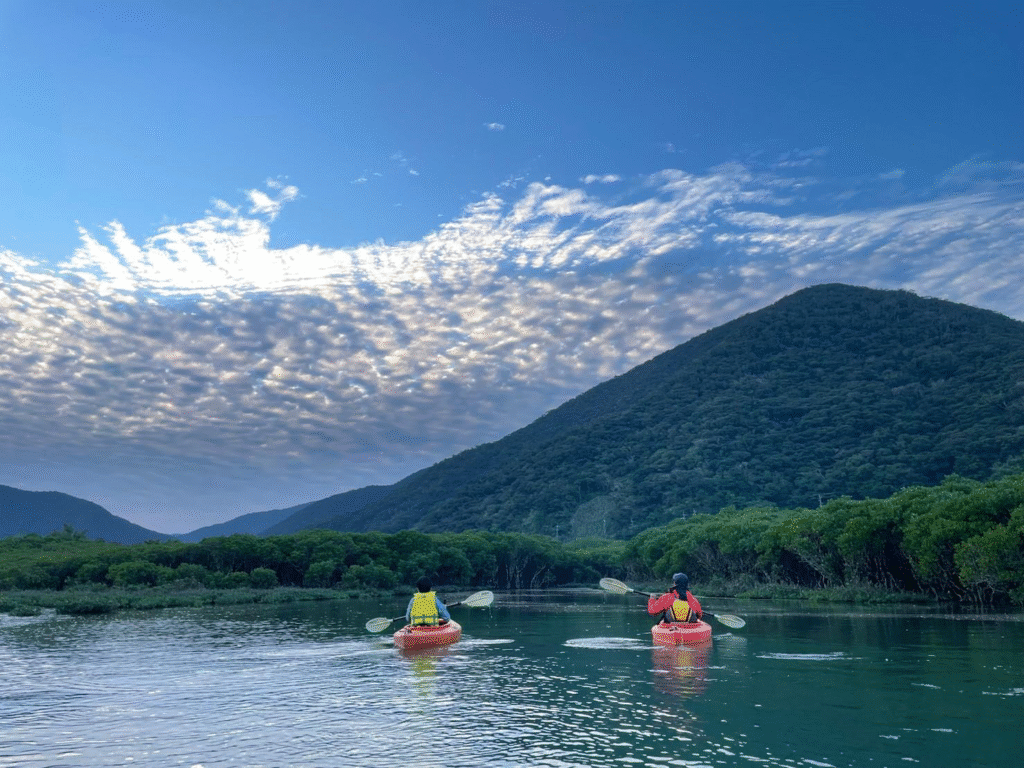
Source : https://www.kagoshima-kankou.com/for/attractions/10218
The mangroves of Amami Oshima are a peaceful hidden gem where you can truly connect with nature. Tucked away in the northern part of the island, these lush wetlands are home to one of Japan’s largest mangrove forests. The area is rich with wildlife and makes the perfect setting for quiet adventures like bird watching or taking a guided kayak tour through the calm, winding waterways.
Gliding gently through the mangroves, you’ll feel completely surrounded by green—it’s a calming, almost magical experience. As you paddle along, you might spot little crabs, tropical birds, or even fish darting beneath your boat. The scenery shifts with the tides, so no two visits feel exactly the same. It’s a great way to slow down and take in the rhythm of the island.
What makes the experience even more special is how deeply the local community cares for this environment. These mangroves aren’t just beautiful—they’re part of everyday life and local tradition. Many tours are run by local guides who share stories about the land and show you how they’re working to protect it for the future.
Whether you’re an outdoor lover or just looking for a peaceful break, the Amami Oshima mangroves offer a rare kind of quiet and beauty. It’s a place to breathe deeply, soak in the sights and sounds, and carry home a memory that feels just a bit more personal.
Practical Tips for Exploring Hidden Japan
When venturing beyond Japan’s popular cities, a little planning goes a long way. Here are some helpful tips to make your trip to rural and lesser-known destinations smooth and enjoyable.
Beyond the JR Lines: Buses, Rentals & Ferries for Rural Japan

Source : https://experience-japan.info/topics/journals/post/zdtq2y0looq/
Many beautiful rural spots aren’t reachable by JR trains alone. Regional buses connect scattered attractions, so checking schedules in advance helps you travel efficiently. For more freedom, renting a car is a great choice—Japan’s roads are well maintained, but be sure to follow local traffic rules and research parking options. Ferries also open up access to remote islands like Okinawa’s or Sado Island, offering scenic journeys. Combining these transport methods lets you discover peaceful, less crowded places loved by locals.
Staying at a Rural Ryokan: Etiquette, Costs & Traditions
A night at a traditional ryokan brings you closer to Japanese culture and hospitality. Remember to remove your shoes before entering and greet staff politely. Ryokans often include meals featuring local seasonal ingredients, making for a memorable culinary experience. Before entering the onsen (hot spring bath), wash yourself thoroughly—this shows respect for others. You’ll also set up your own futon bedding, a charming ritual that adds to the authentic experience. Staying at a countryside ryokan is more than just lodging; it’s a cultural journey.
Onsen Know-How: Soak Like a Local
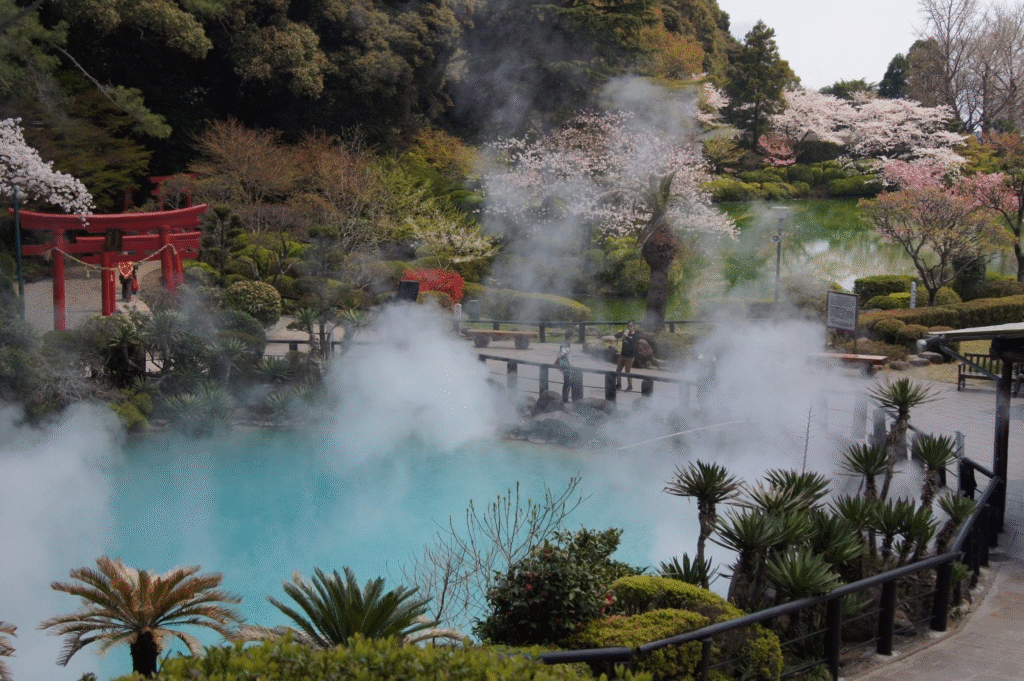
Source: https://www.tophotsprings.com/japan-hot-springs/
To fully enjoy Japan’s hot springs, start by washing well before entering the bath—this keeps the water clean for everyone. Keep your towel out of the water, either on your head or by the side. Ease into the hot water slowly, and take time to relax and appreciate the peaceful surroundings. Many onsen offer open-air baths where you can soak while taking in beautiful natural views. Following local customs will deepen your onsen experience, turning it into a healing and refreshing moment.
FAQ: Planning Your Hidden-Gem Adventure in Japan
When planning a trip to explore Japan’s hidden gems, travelers often have several questions. Here, we answer some common inquiries to help make your adventure smoother and more enjoyable.
When is the best season to visit hidden spots in Japan?
Each season in Japan offers something special. Spring brings the famous cherry blossoms and mild weather, perfect for outdoor exploration. Autumn paints the countryside with vibrant red and gold leaves, creating breathtaking scenery. For winter lovers, snowy mountain villages offer magical landscapes and cozy atmospheres. In summer, you’ll find lush forests and lively coastal areas ideal for nature lovers. Choosing a season depends on what kind of experience you’re after, but no matter when you go, Japan’s hidden gems will impress.
Is it safe and practical to explore off-the-beaten-path Japan alone?
Traveling solo to rural areas can be safe and rewarding with the right preparation. These quiet regions are often less crowded, giving you a chance to connect with nature and local life. It helps to research transportation, accommodation, and local customs beforehand. Engaging respectfully with residents can enrich your experience and provide useful tips, making solo travel both practical and enjoyable.
What should I know about staying at a rural ryokan?
Rural ryokans offer a window into traditional Japanese culture, but they come with unique customs. Removing your shoes, washing thoroughly before entering the onsen, and understanding meal times and futon bedding routines are all part of the experience. Costs usually include meals made with local ingredients, and prices can vary. Knowing these details ahead of time will help you feel comfortable and appreciate the warm hospitality.
Where should I visit on a second trip to Japan?
If you’ve already seen the major cities, consider exploring smaller towns and countryside areas cherished by locals. These places often offer more peaceful surroundings and authentic cultural experiences. Visiting hidden gems lets you see a side of Japan that many tourists miss—whether it’s quiet mountain trails, remote coastal villages, or traditional festivals.
Use these tips to plan your journey to uncover Japan’s hidden treasures, Embrace the adventure with an open heart, and you’ll discover a fresh and unforgettable side of this beautiful country.
Explore Off the Beaten Path in Japan
Japan has so many hidden gems that most travelers never see. After visiting popular cities like Tokyo, Kyoto, and Osaka, these quiet spots offer a refreshing change—a chance to enjoy the local way of life and peaceful surroundings.
In these lesser-known places, you can relax in soothing hot springs, hike through beautiful nature, and taste fresh, local food. With fewer tourists around, the atmosphere feels calm and welcoming, making it easier to connect with the people and culture.
For your next trip, try exploring these hidden treasures. Stepping off the usual tourist path will give you a deeper, more personal experience of Japan—one that you’ll remember long after your journey ends.

